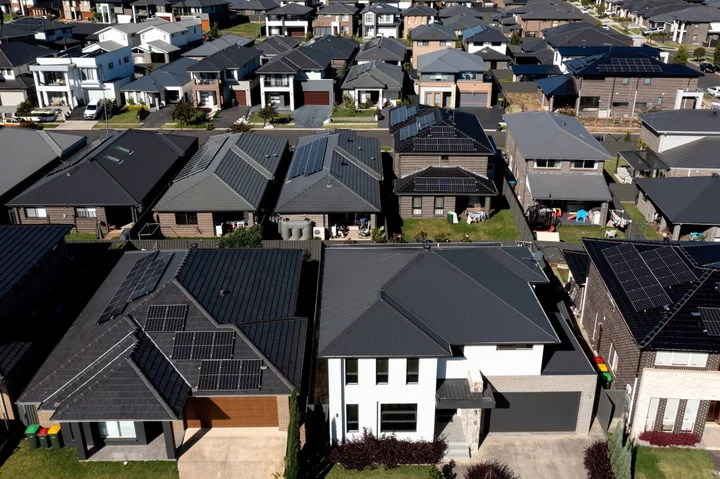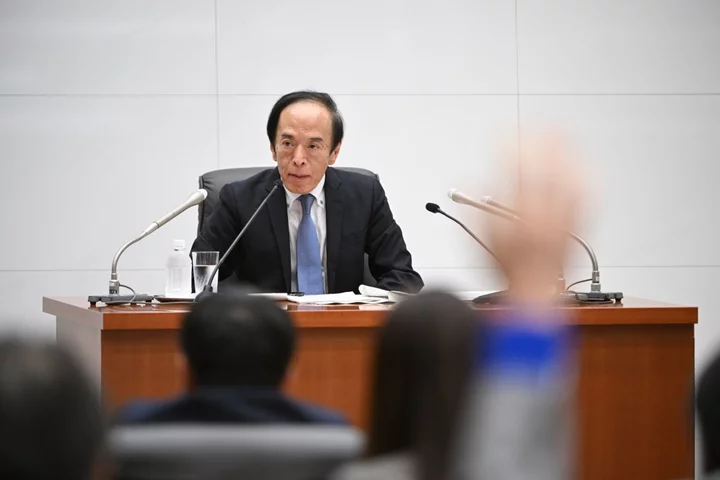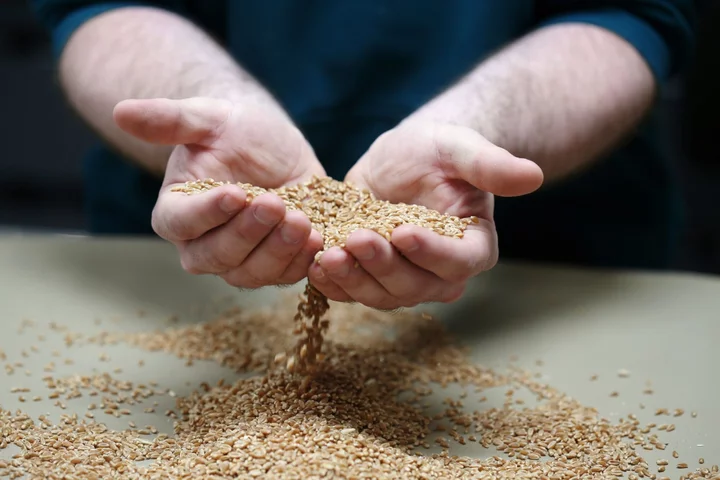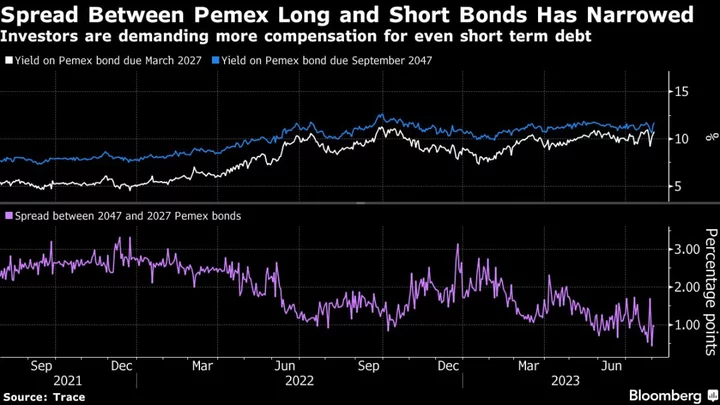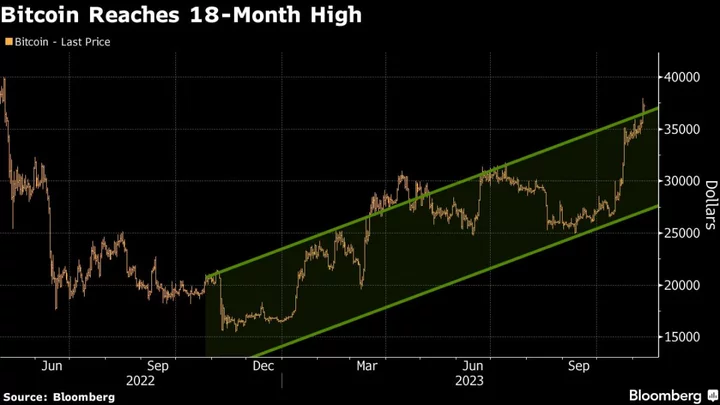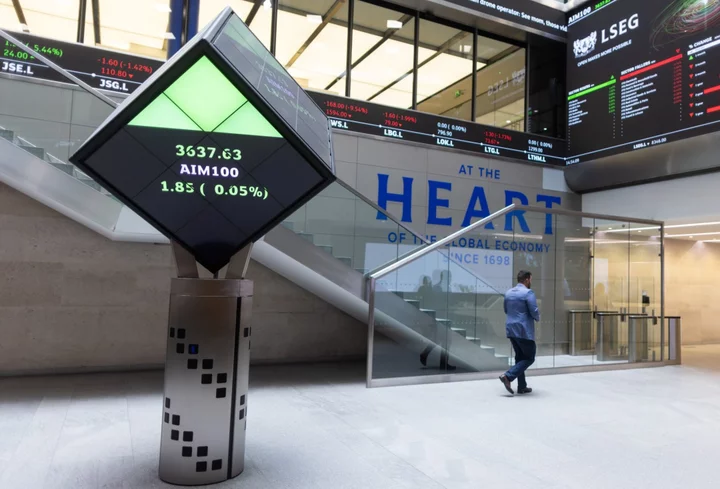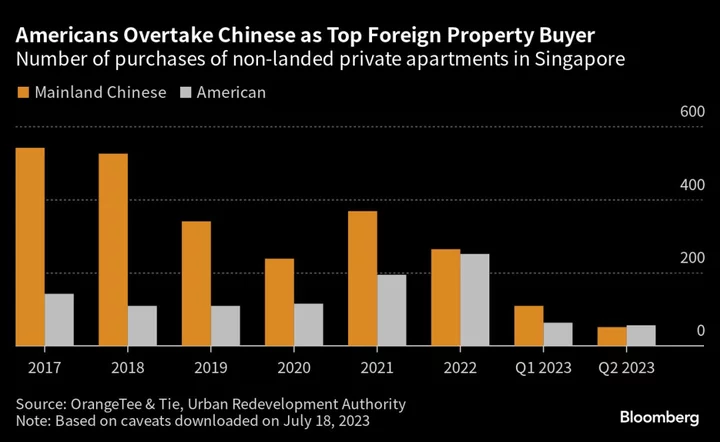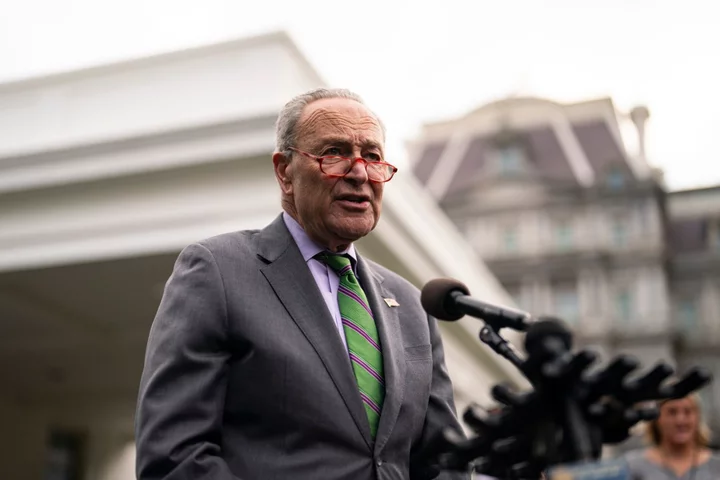Australia’s home-price growth slowed in November as a resumption of interest-rate increases and deteriorating affordability pushed buyers to the sidelines, suggesting a gloomier outlook for the market.
Bellwether Sydney rose 0.3%, while Melbourne edged down 0.1% for a price gain in Australia’s major cities of 0.6%, property consultancy CoreLogic Inc. said in a report Friday. There was also more divergence in markets as mining-powered Perth and Brisbane jumped 1.9% and 1.3%, respectively.
“The housing market is moving through a new inflection point, with the rate of growth in home values becoming more diverse,” said Tim Lawless at CoreLogic. “Downside risk factors have become more pronounced, including an expectation that interest rates could remain higher for longer, worsening affordability challenges and deeply pessimistic” consumer sentiment.
The Reserve Bank in November ended a four-month pause and increased borrowing costs to 4.35%, a 12-year high, though it’s expected to stand pat at Tuesday’s meeting. The RBA maintains a tightening bias as the economy and labor market show ongoing resilience and inflation stays sticky.
Australia’s property market has surprised with a recovery even as the central bank raised rates by 4.25 percentage points since May 2022. It has been fueled by a lack of new housing stock and a surge in population growth.
Indeed, the national Home Value Index reached a new record in November. Housing values have risen 8.3% over the past 10 months, erasing earlier declines in a clear ‘V’ shaped recovery, CoreLogic said.
“The lack of sales supply is keeping the housing market relatively tight, proving a significant offset to the RBA’s rate hikes, which are reducing borrowing capacity and demand,” said George Tharenou, economist at UBS Group AG. He predicts price growth to moderate over 2024 to an annual rate of 5% or less, from around 8% this year.
“We still see a material risk the RBA hike the cash rate again by 25-basis-points in Feb-24,” Tharenou added. “If that occurs, it would likely hit sentiment and housing affordability even further, and hence see prices closer to flat ahead.”
As for the outlook in Sydney and Melbourne, Lawless said slower growth conditions across the upper quartile of the two markets is now increasingly clear. “The more expensive end of the market tends to lead the cycles in these cities,” said Lawless, research director at CoreLogic.
The upshot is that Sydney may follow Melbourne into negative territory in December, according to CoreLogic.
“Market conditions are now in favor of buyers as higher stock levels provide more choice, less urgency and greater opportunities to negotiate,” Lawless said.
(Adds chart, economist comment in 7-8 paragraph.)

